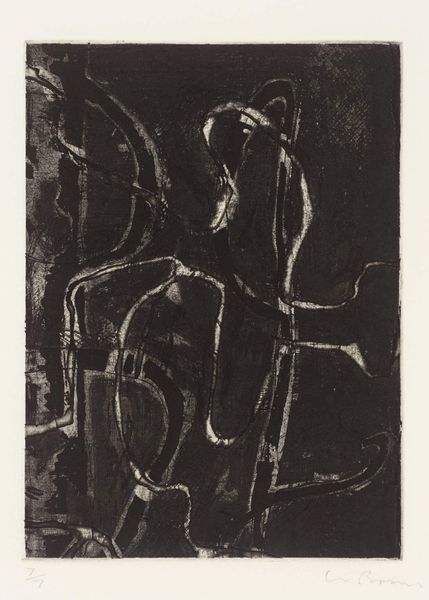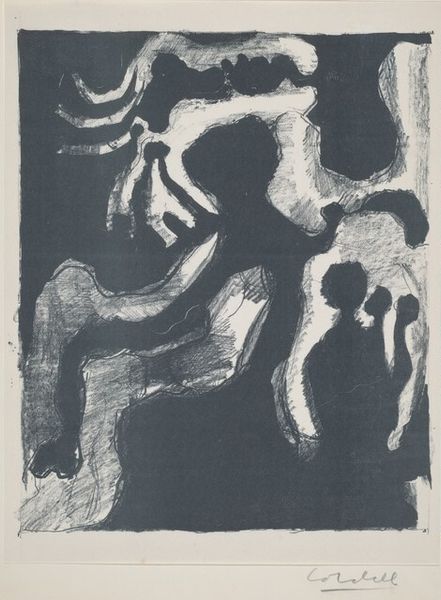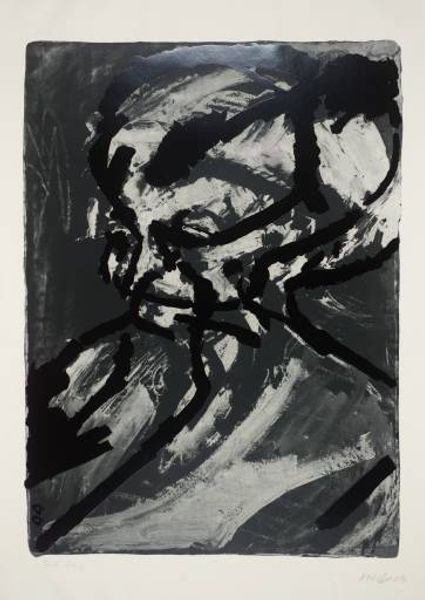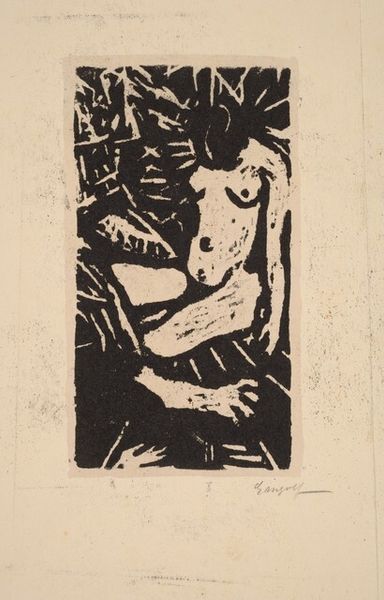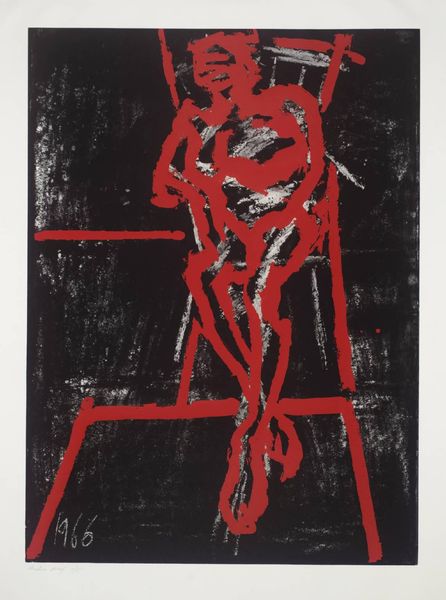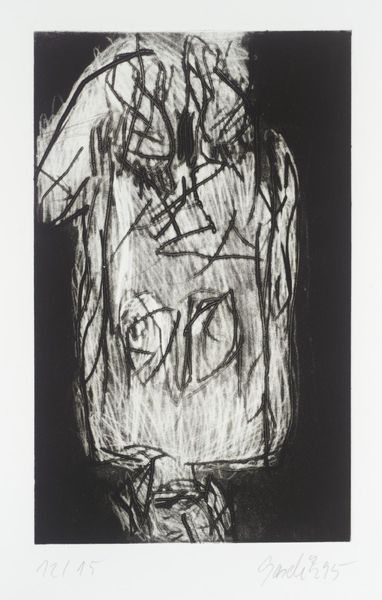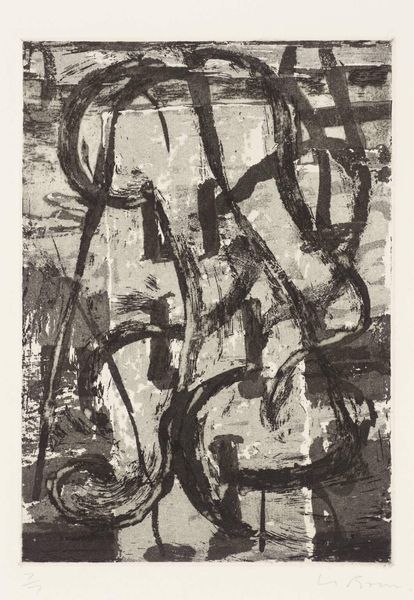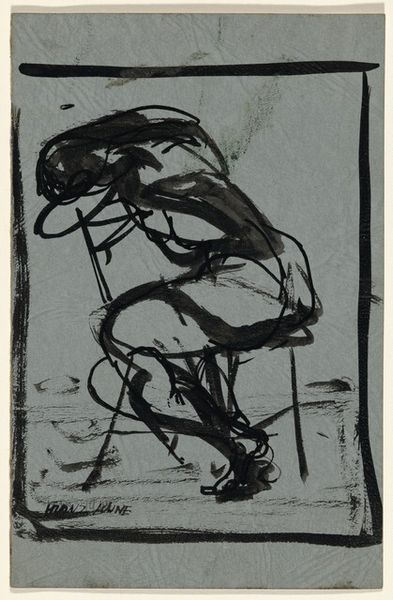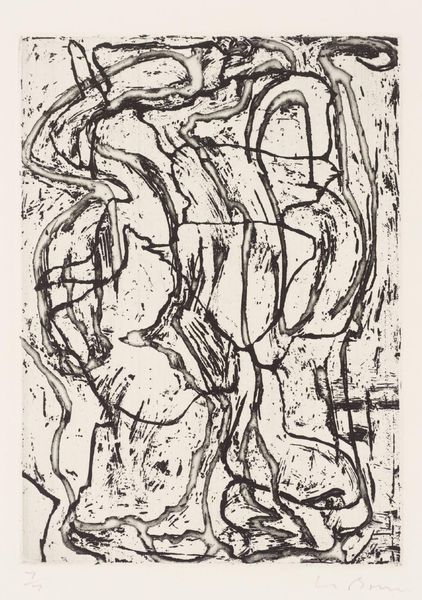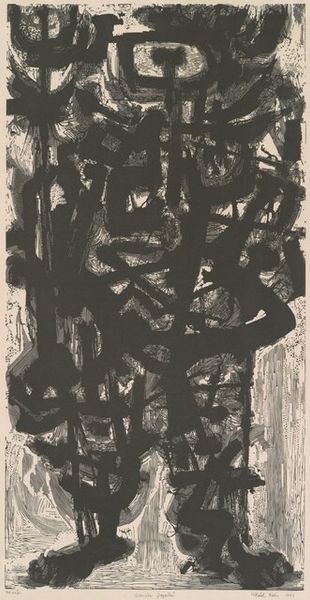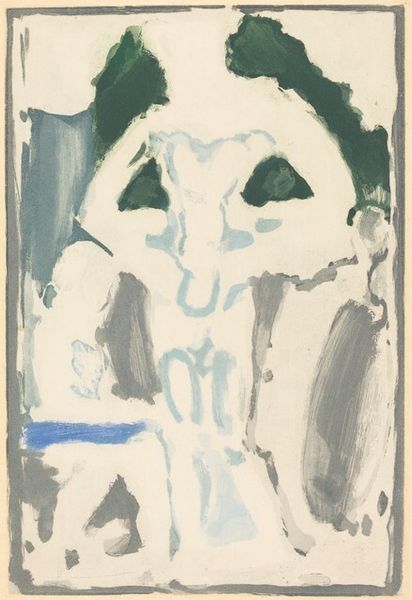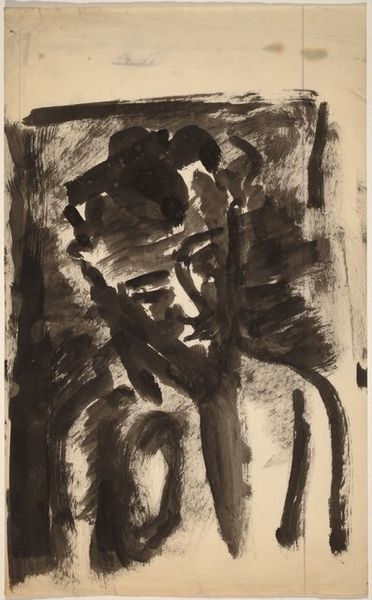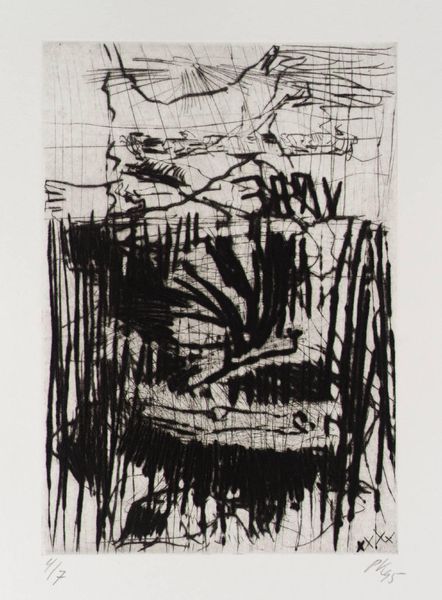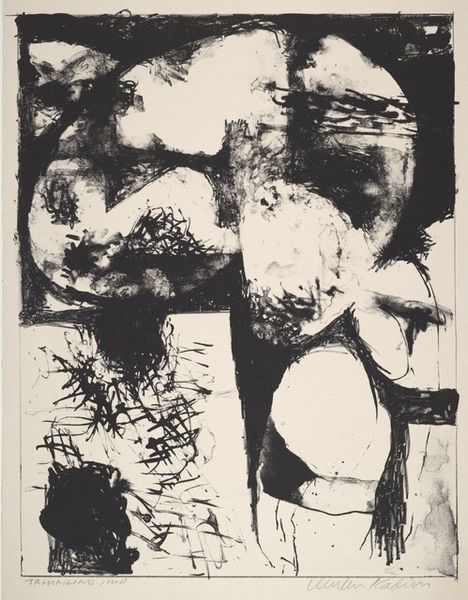
drawing, paper, ink
portrait
drawing
paper
ink
abstraction
monochrome
Copyright: Vilen Barsky,Fair Use
Editor: This is "Female Image," a 1963 ink drawing on paper by Vilen Barsky. The high contrast between the black ink and the white paper is striking. It feels... very raw and emotional. What stands out to you? Curator: The emotional rawness you perceive is potent, isn't it? For me, it immediately calls to mind the visual language of grief and inward turning that appears across cultures, for example, depictions of the Mater Dolorosa, or grieving Virgin Mary. Barsky's choice of abstraction invites us to project our own understanding of sorrow onto the figure, doesn't it? Editor: Absolutely. The lack of distinct features makes it universal, relatable to anyone experiencing sadness. Is there a cultural reason why this archetype is so prevalent? Curator: Throughout art history, we find the figure of a person, often female, turned inward, concealing their face in times of despair or lamentation. This gesture, hiding the face, becomes a symbol for unutterable suffering. Is she protecting herself, ashamed, or mourning? The ambiguity itself speaks volumes about the weight of human emotions carried over centuries. Editor: That’s interesting - I never thought of the hidden face as a recurring symbol. Are there any other symbols or visual elements you see in the drawing that stand out? Curator: Notice how the negative space, the absence of ink, becomes integral. It suggests the internal emptiness experienced during bereavement, shaping the figure. Even the monochrome palette echoes a feeling of deprivation and simplicity of life and the basic elements we need for it. What do you make of that relationship between positive and negative space here? Editor: It makes me see the figure as almost dissolving into the background. It reinforces the idea of being consumed by grief. Thanks, I see it now, and I'll remember it going forward. Curator: It’s about noticing how an artist taps into that collective memory, how they can re-contextualize archetypal themes to connect with us, across time and circumstance. The way he has done so gives us food for thought.
Comments
No comments
Be the first to comment and join the conversation on the ultimate creative platform.
